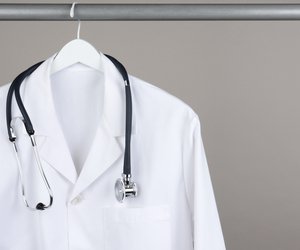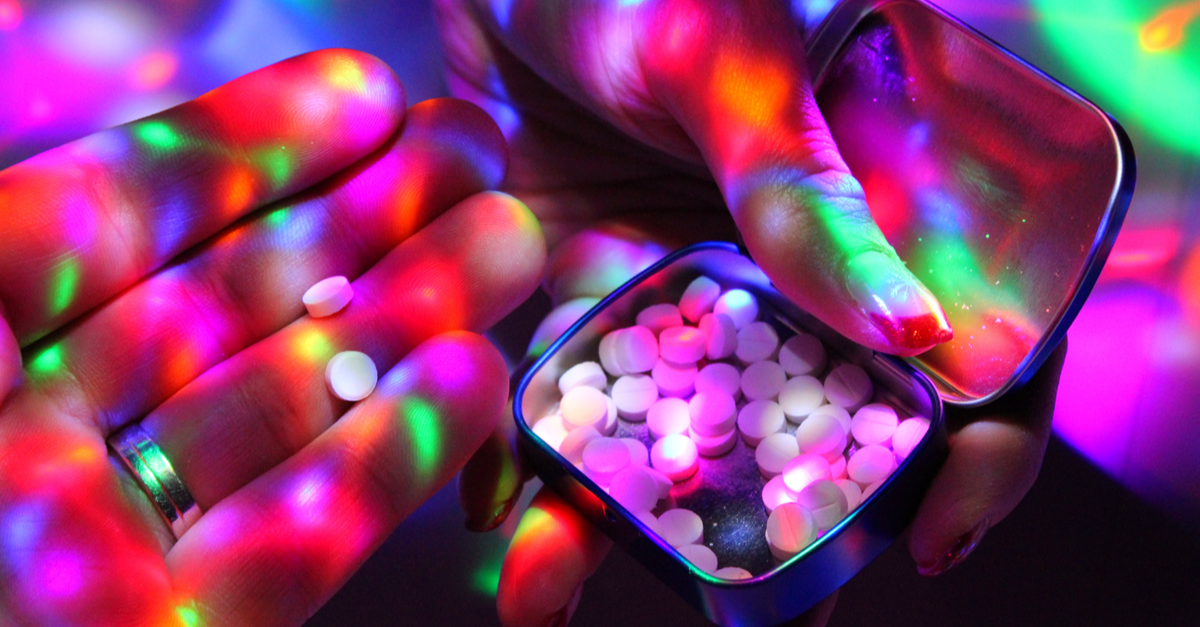Though the emphasis of the medical school application process lies on academic achievement, there are a number of personal qualities that pre-medical students should strive to develop if they wish to become superior physicians. The development of these soft skills may also make students more competitive medical school applicants when they are evident in interviews and letters of recommendation. Such soft skills include:
1. The ability to work effectively in a team
Modern medicine requires immense coordination between various clinicians and providers. Doctors must collaborate with nurses, social workers, specialists, therapists, and others in order to adequately care for their patients in today’s complex medical and social climate. The ability to lead and to collaborate with team members is a necessity for today’s medical trainees. Pre-medical students can develop this skill while working in a team setting in their college coursework (e.g. group projects and presentations), extracurricular activities (e.g. student government and student interest groups), and other major experiences (e.g. philanthropic organizations and research laboratories). Students should actively strive to lead, but they should also work to see the perspectives of all team members, and to incorporate effective strategies to help their team meet common goals.
clinical rotations
A Compilation of Essential SDN Wisdom – Updated for 2022
Originally posted in 2016, this article was adapted from an SDN forums thread provides quick … Read more
How To Overcome Adversity in Professional School
After coming home from a long day at the library studying for my cardiology exam, I get a phone call from my sister. “Hey,” she said. “Grandmother is in the hospital. Can you come home this weekend?” Great, I thought. Not this again.
I was barely beginning to cope with the loss of my dad over eight years ago, and barely staying afloat in medical school because of it. I had failed my first medical course, anatomy, during my first year and just spent a tough summer trying to remediate it, as my other friends went off traveling or spending time at home with their families. Now, my grandmother was a piece of my childhood that I was about to lose and I had no idea how to prepare for it.
The Million Dollar Question
Interview season. The time of year that roads and skies swarm with the best and brightest medical students to all corners of the country taking aim at the next step in their training – residency. Believe it or not, behind the shiny brochures, extravagant dinners and polished powerpoint slides, residency programs are just as nervous about attracting top talent as you are about getting your top choice.
The interview trail is usually a blur of dry cleaning bills, rental cars, and the smell of breath mints masking cheap coffee mixed with nervous sweat. The broken record of the obligatory “strengths and weaknesses” question loops in your head. One of the more terrifying moments in the day comes when an interviewer asks: “What questions do you have for me?” Regardless of who asks it–the intern only four months above you in training or the gatekeeping program director–you know you have to ask something. So why not make it count?
On The Shoulders of Giants: Tips for Aspiring Female Surgeons
While there were many engaging sessions held at the 2015 UC Davis Pre-Health Conference, a few stood out for being exceptionally inspiring. Dr. Lisa Lattanza’s lecture, “How to Be a Successful Female Surgeon”, was one of these standouts.
This isn’t surprising, considering Dr. Lattanza’s pedigree. The chief of Hand, Elbow & Upper Extremity Surgery at UCSF Medical Center, she is known both for her surgical skills and her inexhaustible efforts to encourage and mentor the next generation of female surgeons. She is the president and co-founder of The Perry Initiative, a Bay-area-based foundation which provides educational and experiential opportunities for young women (primarily high-school and early-college-aged) interested in orthopedic surgery – a project which recently earned her the prestigious Jefferson Award for public service.
The Other Preparations to Make For Clinical Clerkships
The transition to clinical clerkships in medical school comes after two years of lectures, in-class exams, and national board exams. Without a doubt, it is an exciting transition. It is a key stage in the development of a physician, allowing the student to see real patients and to learn from practicing professionals. Clinical rotations requires the student to critically think and to apply the vast amount of information learned in the classroom to new situations. The goal is to learn to come up with a list of differential diagnoses, use the correct confirmatory test, and develop a treatment plan. This is what many students believe will be the bulk of their clinical learning during the third and fourth years. As a result, many students spend most of their time focusing only on the academic preparation for clinical rotations and do not sufficiently prepare themselves to stand out in equally important, but non-academic ways.
Hysterectomy or SSRIs?
Reposted from here with permission She was a petite, otherwise well-appearing woman, apprehensively sitting at the edge … Read more
The Med-Peds Residency: Big and Small, We Care for Them All
As third year medical students you’re rotating through your general specialties and you think you’re seeing familiar faces but in new places. Isn’t that your newborn nursery resident who assigned APGAR scores, now leading the code in the medical ICU? Some of you may have had similar déjà vu experiences but rest assured, your mind isn’t fooling you. At 79 programs across the USA and Puerto Rico, Combined Internal Medicine and Pediatric residents walk (briskly) through the halls of the hospital carrying both PALS and ACLS cards in our coat pockets. Our minds have been shaped to think broadly and decisively. We carry an air of calmness from our critical care rotations yet we know when to appropriately turn to our goofy side to connect with our patients. Through four years of versatile training, we are training to be the 21st century physician.
The Combined Internal Medicine-Pediatrics (commonly referred to as “Med-Peds”) is a four-year residency-training program that leads to dual board certification in Internal Medicine and Pediatrics. While there are many combined training programs offered in the US, the Med-Peds residency is by far the most ubiquitous and popular program available. During the four years of training, residents undergo a rigorous schedule of rotations ranging from adult and pediatric wards, MICU, PICU, NICU, CCU, Med-Peds clinic and specialty electives. By graduation, residents will have completed a total of 2 years of adult and 2 years of pediatric training. The frequency at which residents switch from one “side” to another changes depending on the individual residency program. The end product is the same: Individuals who are prepared to deal with acute, complex, chronic and preventive care for both adult and pediatric medical conditions. The broad training creates an endless list of career possibilities. We each carve out a niche that best fits the career interest we have in mind.
How to ace your first patient encounter
As a medical student, you spend four years of college and the first two years of medical school studying non-stop for what feels like thousands of hours, cramming your brain with knowledge. But when the time comes to conduct your first face-to-face patient encounter, your confidence is rocked by the challenge of having to establish rapport, extract all the relevant medical history, and complete a physical exam, all while showing compassion, answering patient questions, and developing a differential diagnosis list and treatment plan in 30 minutes or less. Clinic is even worse with a meager 12 minutes scheduled for each patient encounter.
Seven Habits of Highly Effective Clinical Students
Republished with permission from here. Congratulations! You’ve made it to the clinical portion of medical … Read more
Doing Small Things Great: A practical guide to contributing to your team as an MS3
“Go forth and do great things.”
– Anonymous
No one gets into medical school without a considerable dose of ambition. We want to be involved, to make a difference, to save lives. In short, we want to do great things. We spend years waiting in the wings, our enthusiasm funneled into pre-med activities, o chem exams, and countless hours of studying in the first two years of medical school. Like a horse that has been held tightly in the starting gate that suddenly swings up at the sound of the starter’s bell, we spring forward with unbridled enthusiasm into third year, dirt flying. Having spent nearly a decade in prep (if you start counting in undergrad), we are eager to actually do something and start making a difference. And yet, so much of third year can be sitting around, waiting for the action, and, when the action happens, standing in the back of the room.
An Introvert’s Survival Guide: How to function (and flourish) in medical school as an introvert
“Knowing yourself is the beginning of all wisdom.” – Aristotle Even at the time, I … Read more
How to Find the Strength to Keep Going: Words of Advice from a Third-Year
When medicine burns you out, find strength in remembering why you’re there.
An Apology from a Resident
Dear Third Year Medical Student,
Congratulations! Your two years of textbook learning are complete and you are ready to launch into your clinical training. It’s an exciting time and you’re likely super-eager to jump in, get involved and save a few lives (or at least stand by helpfully while other people save the lives; let’s not get ahead of ourselves). You have high hopes of becoming a key member of your team, taking care of your patients and learning as much as possible. What you will quickly discover is that your experience will be strongly colored by the residents with whom you will work closely. As a medical student, I had the opportunity to work with some truly great residents. Enthusiastic about their field, they worked to incorporate me into the care process and would take a moment, however brief, to draw attention to valuable teaching points that I might otherwise have overlooked.
A Day in the Life: A Look at the Medical School Clerkship Year – Part II
Make sure to check out Part I here!
The remaining day
Following rounds, teams will typically “run the list,”or quickly review the to-do items discussed during rounds and delegate the work as necessary. Since medical students typically cannot input orders, which include things like prescribing medications, scheduling diagnostic imaging and tests, and requesting labs, this usually involves more administrative tasks: obtaining medical records from outside institutions, following up on tests, and other ancillary tasks. Most rotations also incorporate some form of formal teaching in the curriculum. As such, students may be expected to attend lunch lectures with residents or may have their own lecture schedules. Some attending physicians enjoy giving quick teaching sessions and will set aside 30-45 minutes to talk about a particular clinical topic (e.g., management of diabetes, working up an acid-base disturbance, and other common issues) each day in addition to the more formal teaching opportunities scheduled by the clerkship.
A Day in the Life: A Look at the Medical School Clerkship Year – Part I
A caveat, an introduction
To try and describe the clerkship year of medical school – the year-long, in-depth experience for students to actively participate in patient care in a clinical setting, usually in the third year – to those who haven’t experienced it firsthand is a difficult task. I steadfastly believe that medicine is an experiential endeavor, one that cannot be truly understood by someone until he has undergone it himself. The fact that each trainee has his own unique set of “critical-incidents,” to use a term from the medical education literature (1), that profoundly shapes the physician he will become makes the task even more arduous. Nevertheless, I will do what I can to try and give a good look at a day in the life of a third year student and what the experience entails.
What I Wasn’t Meant To Do in Medical School
Don’t be surprised if your medical school experience changes the idea of the future you had envisioned for yourself.
A Letter to Myself, Future Resident, on Dealing with Myself, Current Medical Student
Residents, don’t forget where you came from when you’re not a student anymore.
Ten things I learned in medical school (Other than, you know, the medical stuff)
I learned a great deal during the preclinical years of medical school, much of which served me well during my clinical training (although I never found a practical use for memorizing the Krebs cycle beyond boards exams). Clinical training was a whole new world, filled with hidden lessons that I didn’t find in any of my textbooks.
10. Late is a four-letter word. Be on time; rounds do not wait for the medical student. A lot of being a third year med student is simply being there. When I was on my surgery clerkship, New York was hit by hurricane Sandy. The next day, we were all there for morning rounds. On time.
Raves, Rollin’, & Roofies: Your Guide to Club Drugs
Updated December 8, 2021. The article was updated to correct minor grammatical errors. Scenario An … Read more



















